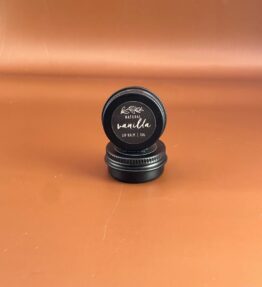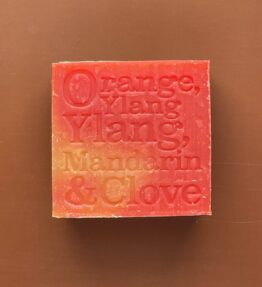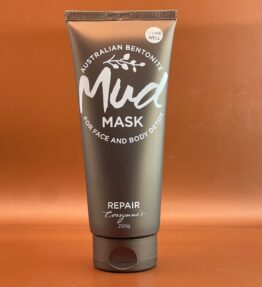Poor Regulation
Because there is little to no regulation of harmful ingredients in skincare products, it is up to us to choose safer products for ourselves and loved ones.
Everyday we are all exposed to dangerous chemicals from all kinds of sources: pesticides, plastics, exhaust fumes, plus many more that we can’t control but choosing safer skincare and cosmetic products is something we CAN control, and it’s a big part of our daily lives, which means removing harmful ingredients can have a big impact on our health.
By choosing to use Corrynne’s Natural Skincare products we guarantee you all our products are as natural as possible and safe. Our product ingredients have been thoroughly researched for there safety of use and beneficial properties however it is not always possible to avoid preservatives altogether as these are sometimes a necessity to prevent things going mouldy, but they don’t have to be harmful if you chose the right ones in the right quantity. Phenoxyethanol, Ethylhexylglycerin at less than 1% is used in our moisturisers and is the most natural we can buy. Ethylhexylglycerin is derived from glycerin, while Phenoxyethanol is a synthetic preservative. Paraben free. NO other products contain preservatives.
Ingredients to Avoid in Your Makeup and Skincare Products
- Parabens are preservatives found in everything from soap to lotion to makeup. If it has water in it, it probably has a paraben to keep it from growing bacteria. Examples include: methylparaben, proplyparaben, isopropylparaben, and isobutylparaben. If “paraben” is in the word, avoid it. Parabens are known endocrine distruptors, meaning they mimic estrogen in the body and can lead to hormonal imbalances, and possibly even breast cancer. For example, a recent study found concentrations of parabens, specifically methylparaben, in human breast tumors. Another study found 99% of all cancerous breast tumors contained parabens.
- Artificial Fragrance/Parfum. Almost every single conventional skincare and cosmetic product (even “unscented” ones) contains artificial fragrances. Manufacturers aren’t required to reveal what’s actually in their fragrances, so you’ll simply see Fragrance or Parfum on the ingredients list when it could actually be a cocktail of carcinogens, allergens, endocrine distruptors, and irritants.
- Sodium Lauryl Sulfate and Sodium Laureth Sulfate. SLS/SLES are foaming agents used in a slew of personal care products, including skincare and cosmetics, shampoo, and toothpaste. They are surfactants that can cause skin irritation or trigger allergies. Additionally, chemical compounds known as “nitrosamines” are common by-products of the sulphation process. 90% of nitrosamines are believed to be carcinogenic.
- Phthalates, phthalate is a plasticizer that is added to plastic to keep it from becoming brittle. Phthalates are used in cosmetics primarily in fragrances, and can also be found in other personal care products, such as hair spray and nail polish. Examples include: DBP, DEHP, DEP and others. Like parabens, phthalates are endocrine distruptors and can cause hormonal and reproductive problems and birth defects.
- Polyethylene Glycol (PEG) is used is many types of cosmetics as a thickener, especially in lotions, shampoo, and sunscreen. PEG is often contaminated with both ethylene oxide (a known carcinogen) and 1,4-Dioxane (which causes respiratory problems and is banned in Canada).
- Formaldehyde is used as a preservative in cosmetics. It’s a known carcinogen that is also linked to asthma, neurotoxicity, and developmental toxicity. It can be found in preservatives such as quaternium-15, DMDM hydantoin, and imidazolidinyl urea.
- Oxybenzone. Sunscreens come in two different forms: chemical and mineral filters. The most common sunscreens on the market use chemical filters such as oxybenzone. Oxybenzone is a known endocrine disruptor and can alter thyroid function. It’s also linked to skin allergies. Chemical sunscreens should be avoided at all costs—especially with children. Oxybenzone can also be found in moisturizers, lip balm, and makeup.
- Diethanolamine is a foaming agent. It’s a known carcinogen and respiratory toxin, which is why the EU has restricted its use in personal care products. Despite this, it’s still used in bubble bath, body wash, and shampoo in the US. It’s often abbreviated as DEA on cosmetic labels.
- Triclosan is an antibacterial agent once used in antibacterial soaps. In 2016, it was banned from soap used in health-care settings by the US FDA but still legal in Australia, but it is still allowed in personal cosmetics. Not only does triclosan contribute to antibiotic resistant bacteria, but it’s also an endocrine distruptor and was shown to contribute to gut inflammation and promote tumor growth in mouse studies. It has also been associated with a higher risk of food allergy.
Note: 11 – 21 are all used in Dove which is the soap most recommended as a mild soap?…




